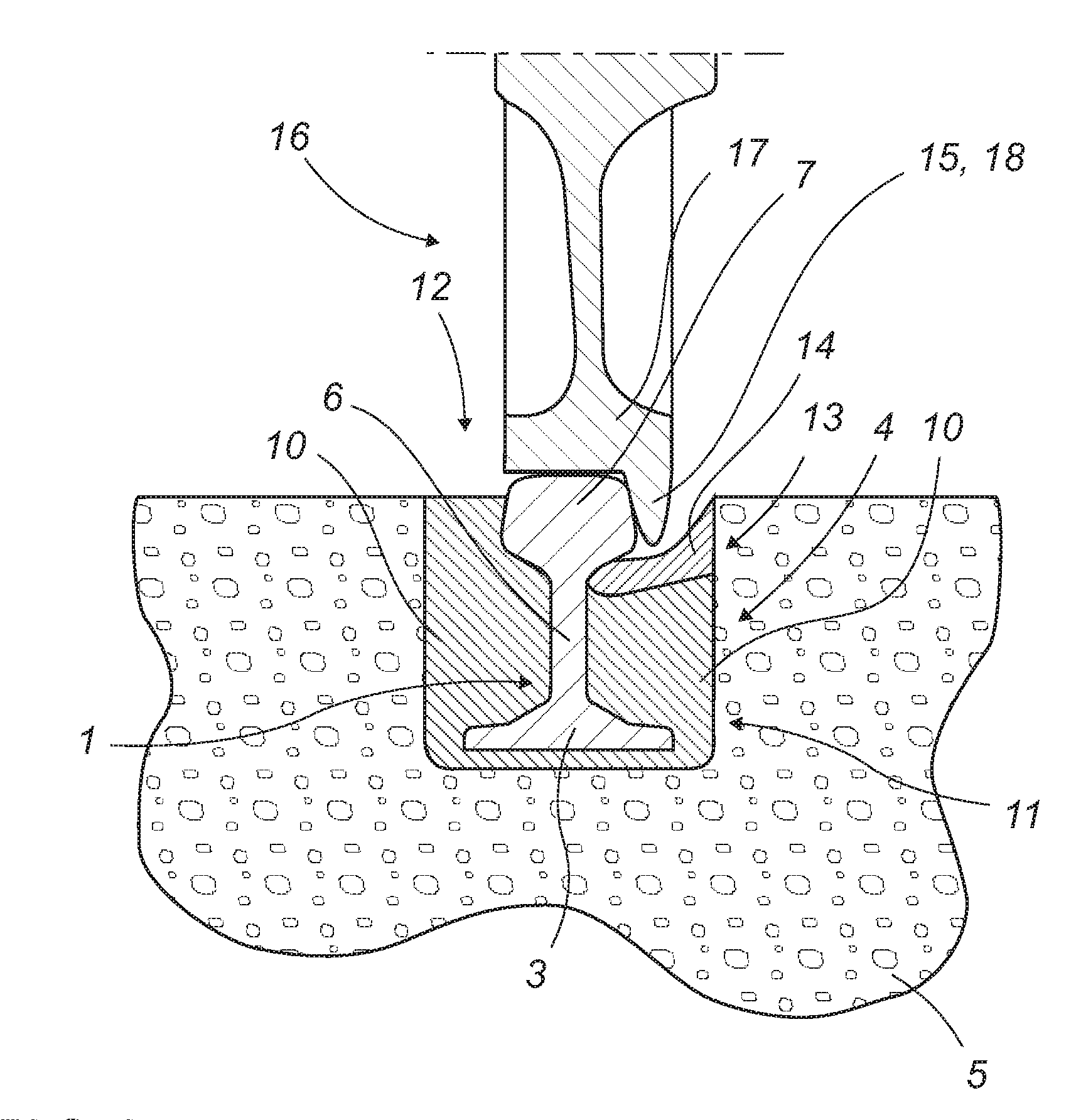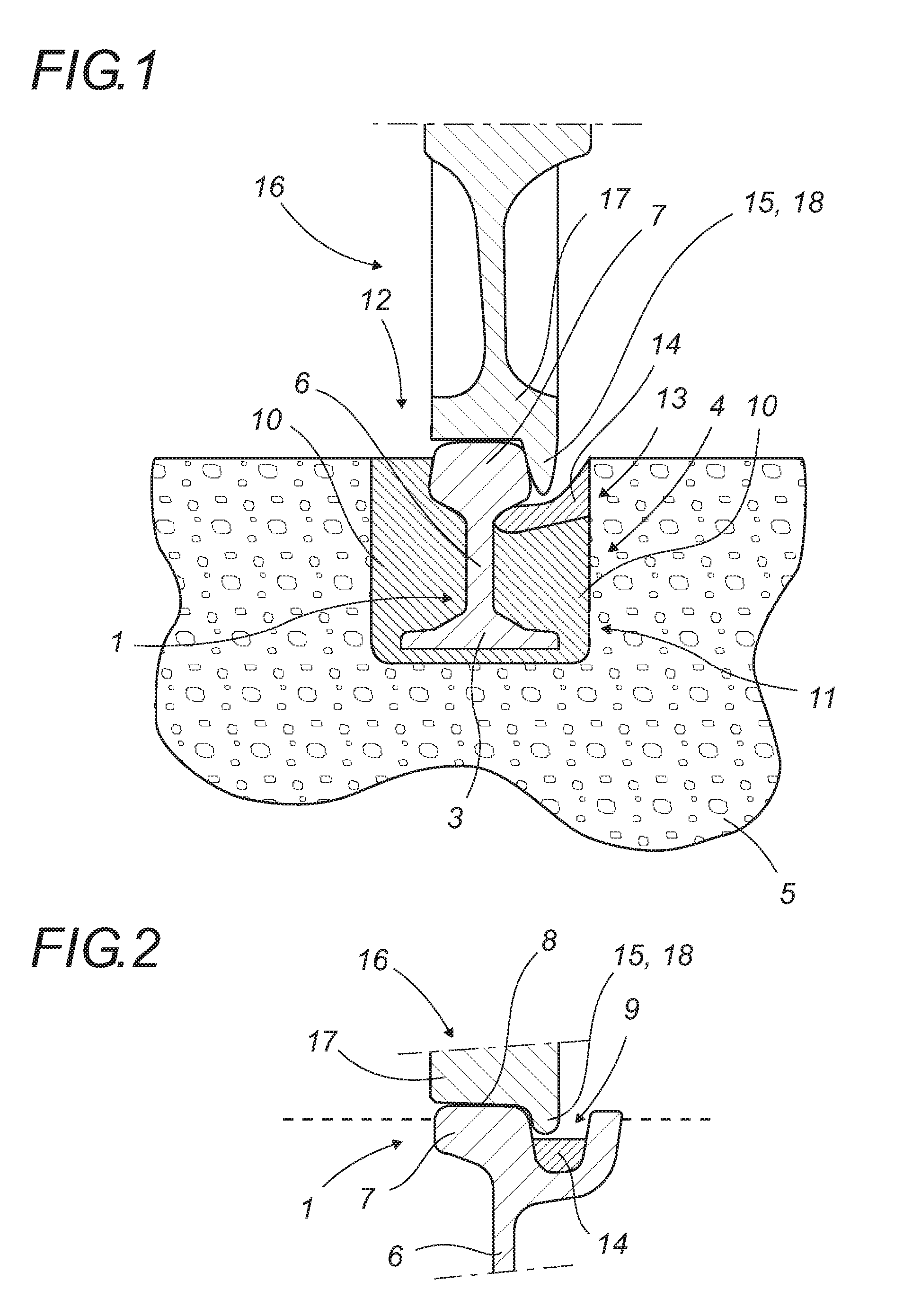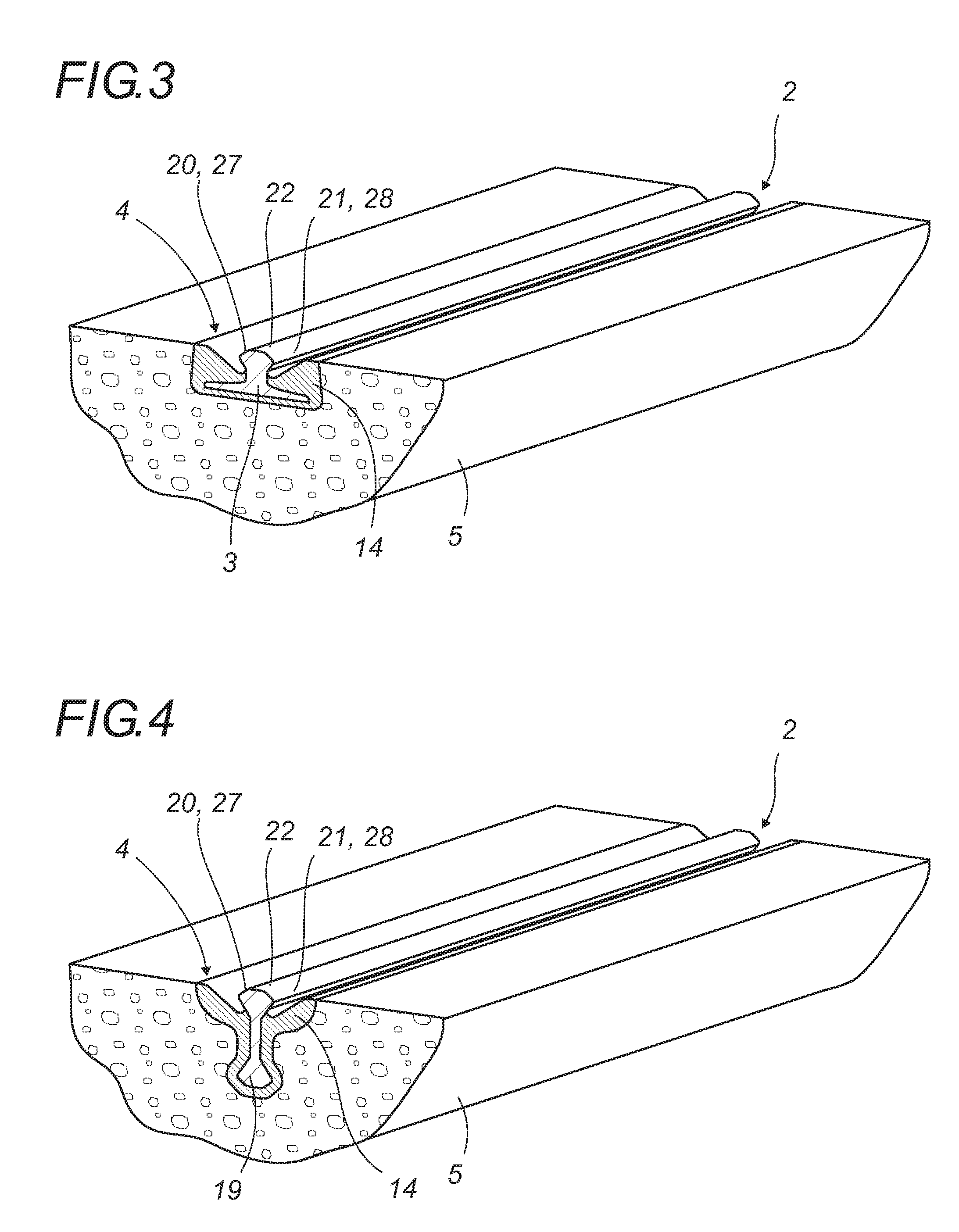Self-cleaning assembly employing a gap filler for a guidance or runway rail on the ground
a gap filler and self-cleaning technology, applied in rails, railway tracks, ways, etc., can solve the problems of local blockage of gap, damage to rollers or wheels, derailment, etc., and achieve the effect of ensuring the reliability and safety of guiding
- Summary
- Abstract
- Description
- Claims
- Application Information
AI Technical Summary
Benefits of technology
Problems solved by technology
Method used
Image
Examples
Embodiment Construction
[0029]The gap lining for a guide-rail or rolling rail according to the present invention will now be described in detail with reference to FIGS. 1 to 12. Equivalent elements in the various figures will be given the same index numbers.
[0030]The gap lining is applied to guide-rails for flanged rollers arranged vertically or inclined, but also for railway wheels, i.e. wheels with a flange that roll on a rail in the vertical or inclined position, whether alone or in pairs.
[0031]FIGS. 1 and 2 aim to illustrate the general nature of the application of the present invention, by showing the case of a railway rolling rail with a classical profile and then one with a grooved profile.
[0032]As shown, the invention relates as much to a ground rail 1 for the rolling of a railway vehicle as to a ground-level guide-rail 2.
[0033]The rails 1 and 2 to which the invention relates are ones of the type comprising in particular a supporting base or foot 3 positioned below ground level and of the type that...
PUM
 Login to View More
Login to View More Abstract
Description
Claims
Application Information
 Login to View More
Login to View More - R&D
- Intellectual Property
- Life Sciences
- Materials
- Tech Scout
- Unparalleled Data Quality
- Higher Quality Content
- 60% Fewer Hallucinations
Browse by: Latest US Patents, China's latest patents, Technical Efficacy Thesaurus, Application Domain, Technology Topic, Popular Technical Reports.
© 2025 PatSnap. All rights reserved.Legal|Privacy policy|Modern Slavery Act Transparency Statement|Sitemap|About US| Contact US: help@patsnap.com



